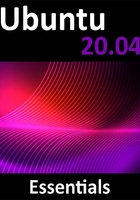
3. Installing Ubuntu on a Clean Disk Drive
There are now three ways in which an Ubuntu system can be deployed. One method is to either purchase new hardware or re-purpose an existing computer system on which to install and run the operating system. Alternatively, a virtualization platform such as VirtualBox or VMware can be used install and run Ubuntu inside a virtual machine on an existing operating system. Another option is to create a cloud-based operating system instance using services such as Amazon AWS, Google Cloud or Microsoft Azure (to name but a few). Since cloud-based instances are typically created by selecting a pre-configured, ready to run operating system image that is already optimized for the cloud platform, and using that as the basis for the Ubuntu system, there is no need to perform a manual operating system installation in this situation.
If, on the other hand, you plan to install Ubuntu on your own hardware or make use a virtualization environment, the first step on the path to learning about Ubuntu involves installing the operating system.
Ubuntu can be installed either in a clean disk environment (where an entire disk is cleared of any existing partitions and dedicated entirely to Ubuntu) or in a dual boot environment where Ubuntu co-exists with another operating system on the disk (typically a member of the Microsoft Windows family of operating systems).
In this chapter we will be covering the clean disk approach to installation from local or remote installation media. Dual boot installation with a Windows 10 system will be covered in ”Dual Booting Ubuntu with Windows”.